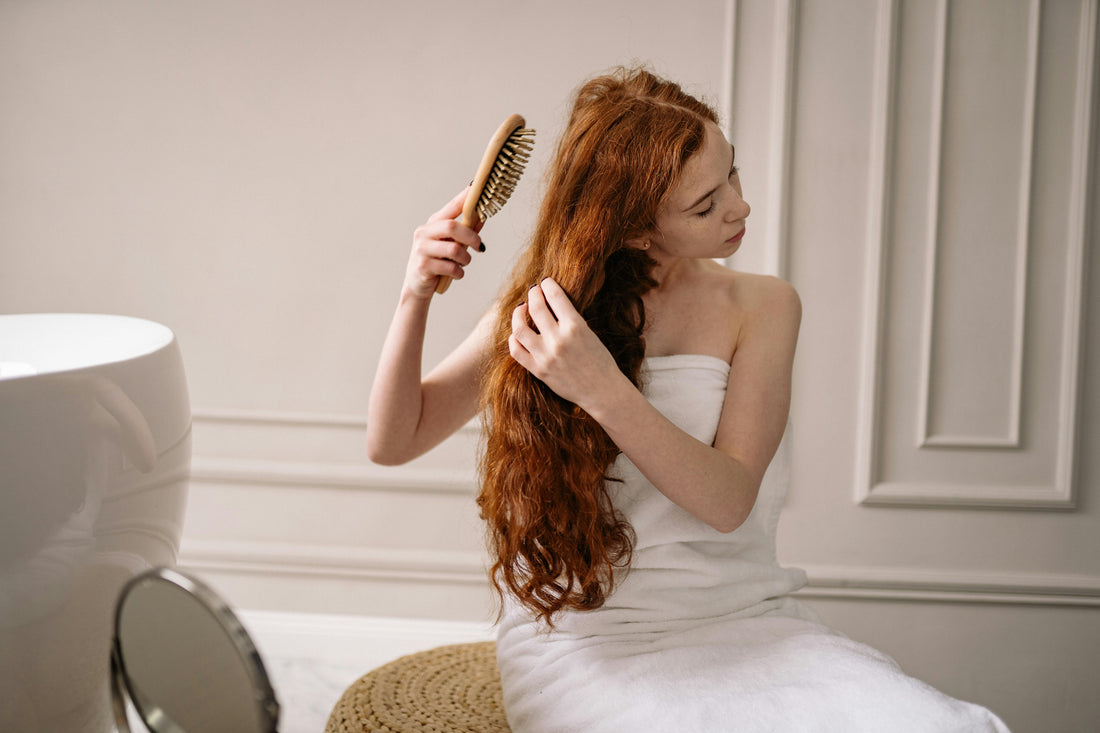
Understanding Scalp Health: A Trichologist’s Guide to Your Body’s Most Overlooked Ecosystem
Share
The scalp remains one of the most misunderstood—and yet most critical—aspects of personal care. While we devote considerable attention to skincare and haircare, the vital interface between the two often gets neglected. Trichology, the scientific study of the scalp and hair, reveals this complex ecosystem as far more than just "skin where hair happens to grow." At H Salon, we approach scalp health with the nuance it deserves, recognising it as the foundation for everything from hair growth to overall comfort.
The Scalp’s Unique Anatomy
Your scalp differs from other skin areas in several fundamental ways. Comprising five distinct layers (often remembered by the mnemonic SCALP: Skin, Connective tissue, Aponeurosis, Loose areolar tissue, and Periosteum), it contains approximately 100,000 hair follicles—each a sophisticated micro-organ in its own right. The density of these follicles, combined with a higher concentration of sebaceous glands than anywhere else on the body, creates an environment that demands specialised care.
Blood flow to the scalp is exceptionally robust—nearly ten times that of other skin areas—which explains why scalp wounds bleed so profusely and why nutrient deficiencies often manifest here first. This rich vascular network also means the scalp serves as a significant thermoregulator, with heat dissipation occurring through the dense network of blood vessels just beneath the surface.
The Scalp Microbiome: An Invisible Ecosystem
Modern trichology has revealed the scalp as host to a complex microbiome, with bacterial and fungal populations that differ markedly from those on facial or body skin. The most current research identifies Cutibacterium (formerly Propionibacterium) and Staphylococcus species as dominant, alongside the yeast Malassezia. In balanced conditions, these microorganisms coexist harmoniously, contributing to everything from pH maintenance to pathogen defence.
Problems arise when this delicate balance tips. Factors like overwashing, harsh products, stress, hormonal fluctuations, or environmental aggressors can disrupt the microbiome, leading to conditions like:
-
Seborrhoeic dermatitis (flaking, redness)
-
Folliculitis (inflamed hair follicles)
-
Altered sebum production (oily or excessively dry scalp)
Maintaining this microbial balance requires avoiding the "scorched earth" approach of many anti-dandruff treatments, which eliminate both harmful and beneficial organisms. Instead, modern approaches focus on gentle recalibration—exactly the philosophy behind H Salon’s microbiome-supporting formulations.
The Hair Growth Cycle and Scalp Health
Hair follicles operate on a cyclical pattern with three key phases:
-
Anagen (growth phase, lasting 2-7 years)
-
Catagen (transitional phase, ~2 weeks)
-
Telogen (resting phase, ~3 months before shedding)
The scalp environment directly influences these cycles. For example, chronic inflammation can prematurely push follicles into telogen (explaining post-illness hair shedding), while improved circulation and reduced oxidative stress may prolong anagen. This explains why addressing scalp conditions often improves hair density and quality over time, even without direct hair treatments.
Common Scalp Conditions Demystified
Dry Scalp vs. Dandruff
While both involve flaking, their origins differ fundamentally. Dry scalp results from insufficient sebum production or moisture loss (often exacerbated by harsh products or dry climates), producing small, white flakes. Dandruff (often Malassezia-related) creates larger, oilier flakes accompanied by redness—and paradoxically, may worsen with infrequent washing.
Follicular Health
Hair follicles can become obstructed by sebum, product buildup, or keratin debris—a particular concern for those with fine hair or high product use. Early signs include decreased hair caliber, slower growth, or increased scalp tension. Gentle exfoliation (through ingredients like gluconolactone) helps maintain follicle clarity without irritation.
Sensitivity and Irritation
The scalp contains an abundance of sensory nerves and immune cells, making it highly reactive. Common triggers include fragrance allergens, surfactants like SLS, and even mechanical stress from tight hairstyles. Unlike facial skin, the scalp’s delayed reaction time means irritation often appears days after exposure.
The Impact of Modern Life on Scalp Health
Contemporary lifestyles introduce unprecedented challenges to scalp equilibrium:
Environmental Stressors
Particulate matter from pollution has been shown to increase oxidative stress in scalp tissue, while hard water minerals (calcium, magnesium) leave residues that disrupt both moisture balance and product efficacy.
Dietary Influences
Nutritional deficiencies (particularly iron, zinc, biotin, and vitamin D) manifest quickly in the scalp due to its rapid cell turnover. Conversely, diets high in refined sugars may exacerbate microbial imbalances.
Psychological Factors
Stress triggers neuropeptides that can alter follicular cycling and sebum production—the biological basis for stress-related hair thinning or oiliness fluctuations.
H Salon’s Approach to Scalp Care
Our formulations address these complexities through targeted, multitasking solutions:
Scalp Silk™
This pH-balanced mist combines prebiotic rose water with microbiome-supporting actives to maintain equilibrium. Unlike astringent toners, it hydrates while reinforcing the scalp’s natural defences against daily stressors.
Ground Recovery Oil™
Designed for intermittent use, this treatment delivers lipid-soluble nutrients (like rosemary-derived ursolic acid) to support follicle health without clogging. Its timed application (pre-wash rather than leave-in) prevents residue buildup.
Practical Scalp Care Guidelines
-
Cleansing Frequency
Adjust based on scalp type: oily scalps may need daily washing with gentle surfactants, while dry types benefit from less frequent cleansing with hydrating formulas. -
Water Temperature
Hot water strips protective lipids. Lukewarm rinses preserve moisture while effectively removing impurities. -
Product Application
Apply treatments directly to the scalp using a dropper or nozzle (not just poured through hair). Massage with fingertips—not nails—to stimulate circulation without abrasion. -
Seasonal Adjustments
Humid summers may require more frequent cleansing, while winter demands richer hydration to combat indoor heating.
The Future of Trichology
Emerging research explores fascinating frontiers:
-
Chronobiology’s role in hair growth cycles
-
Personalised microbiome analysis for customised care
-
Topical "postbiotics" to support scalp immunity
At H Salon, we monitor these developments while staying grounded in proven science—because scalp care shouldn’t chase trends, but rather cultivate lasting health.
Your scalp is more than just hair’s backdrop; it’s a living, breathing ecosystem that deserves understanding and care. By approaching it with the same sophistication as skincare—recognising its unique needs and rhythms—we lay the foundation for hair that doesn’t just look healthy, but truly is.
